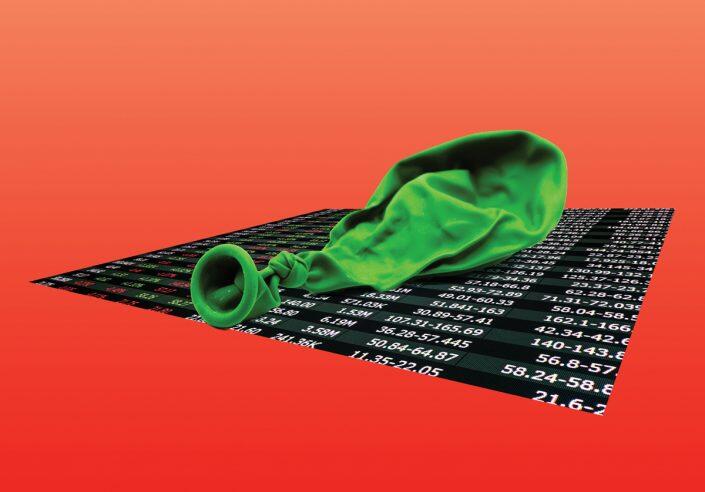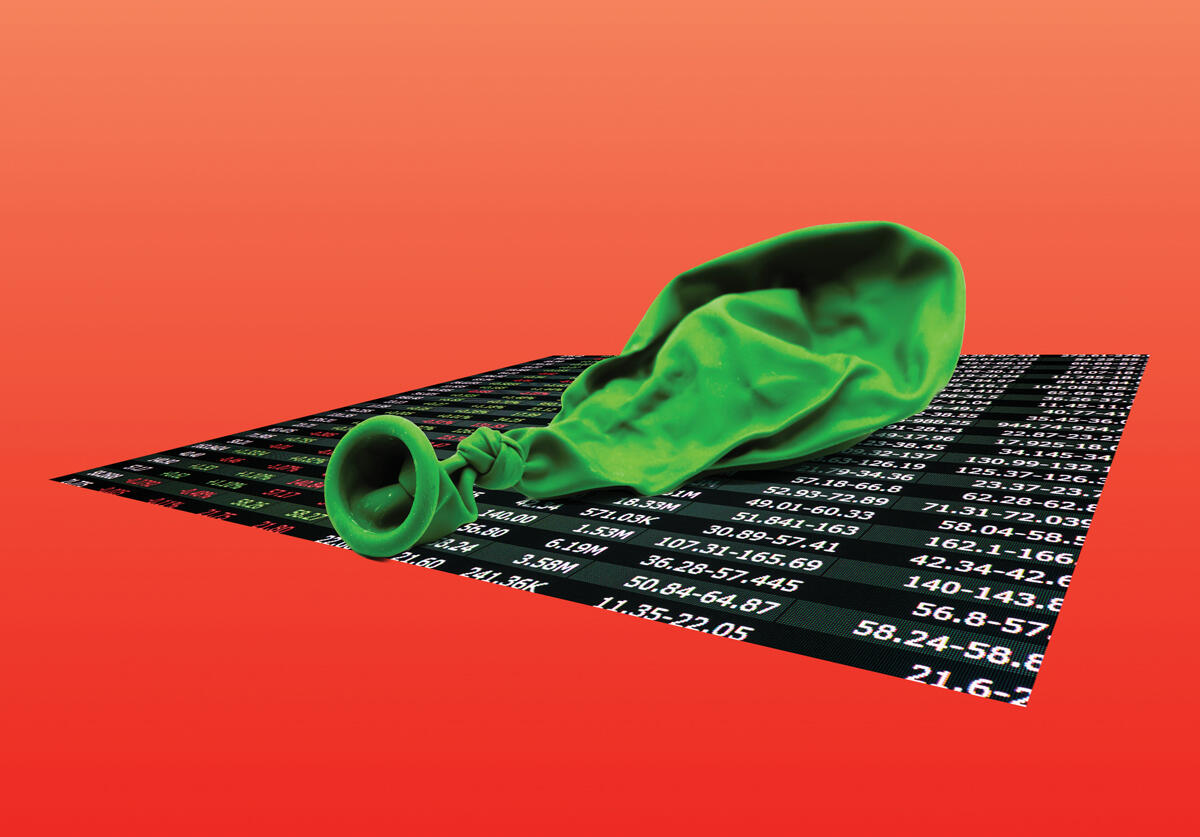 For proptech companies considering going public, it may be prudent to wait.
For proptech companies considering going public, it may be prudent to wait.
Most of the proptechs that did so over the last 18 months the fashionable way — via mergers with special purpose acquisition companies, or SPACs — have been duds, their stock prices today in the gutter.
The caution that now surrounds SPACs has dampened a market that a year ago was blazing, fueled by pandemic-era spending on technology and investor enthusiasm for the next new thing.
“The market as a whole has taken a look at SPACs and said, ‘Wait a second. Not all these deals look as good as we thought,’” said Jeffrey Berman, partner at proptech-focused venture firm Camber Creek.
Opendoor, an iBuyer that went public in late 2020 through a merger with Chamath Palihapitiya’s Social Capital Hedosophia II, was initially one of the more successful proptech SPACs. Its valuation more than tripled, to $18 billion from $5 billion, after the merger closed, and its shares, which began trading at about $31 in December 2020, peaked at around $35 in February of last year. Today, Opendoor trades below $10 despite reporting steady revenue gains throughout 2021.
SmartRent has had a similar, though less dramatic, trajectory. The smart-home startup’s stock, which began trading in August at around $12 after merging with a blank-check company sponsored by proptech venture firm Fifth Wall, reached a peak value of about $15 before falling off a cliff. Today, the stock trades around $7.
The keyless-entry company Latch, a darling among the industry’s leading lights who see access control as one of proptech’s most promising niches, also experienced a share price spike before coming back to earth. The company merged with a Tishman Speyer-sponsored SPAC in June, and its stock price hit $14 in September. Today, it trades at just $6.
Shares of both Doma and Hippo, two insurance technology companies, are also down drastically — more than 60 percent and 80 percent, respectively — since their SPAC mergers last summer.
And shares of Sonder, the short-term rental company, dropped around 10 percent the day they began trading on the Nasdaq in mid-January, following shareholders approval of its merger with the SPAC Gores Metropoulous II. The company lowered its valuation expectations last October in the face of another pandemic-related travel crackdown and SPAC market headwinds.
“The market has shifted — and we totally get that,” Alec Gores, the sponsor, told DealBook at the time. “As long as you have a great company, the market is going to go in 100 different ways, and we just have to be smart enough to recognize where the market is.”
Let’s just pay whatever
SPACs, also known as blank-check companies, have been around for decades, but have become increasingly popular investment vehicles over the last two years, functioning as a back door for retail investors who would not otherwise be able to access such high-growth opportunities, and as shortcut to the public markets for promising young companies. A record 613 SPACs pulled in a total of $145 billion in 2021, up 91 percent from the amount raised in 2020, according to the accounting firm EisnerAmper.
The SPAC sponsor raises capital by offering investors “units” of the SPAC that consist of shares and warrants — contracts granting the investor the right to purchase additional shares in the future at a fixed price. The SPAC then has a window, typically two years, to find a promising company to merge with, and thereby take public. Up-and-coming proptechs with a huge total addressable market, or TAM, have been attractive targets.

The deals are alluring for the startups, too. They get to skip the laborious and costly process of undertaking an IPO themselves, and the SPAC’s sponsor — technically a partner, not a buyer — brings, ideally, significant industry acumen and financial resources to the table to help grow the business.
Judiciously executed, a SPAC merger is a useful tool, insiders say. The sponsor serves as a kind of shepherd, plucking the most promising startups from the flock and guiding them into the public sphere, connecting them with long-term capital partners.
But the market euphoria in 2020 and 2021 — even politicians and celebrities were forming SPACs — seemed to have made everyone a little drunk. In some cases, sponsors with no real estate experience were merging with proptechs, which themselves were still working out kinks in their businesses.
There was a glut of SPACs, and a shortage of viable targets. During the mania, people began to speak of “SPAC-offs,” where sponsors were outbidding one another, said Eric Gomberg, who heads SPAC investment banking at Odeon Capital Group. It was a “let’s just pay whatever” period, he said.
“That’s kind of antithetical to what a SPAC is supposed to be,” Gomberg said. “If you’re a sponsor, you’re supposed to be bringing a good deal to the table at a compelling price, not at top dollar.”
Structural issues
The very structure of SPAC deals has contributed significantly to investors’ present-day skepticism.
Unlike a traditional IPO, whose pricing varies depending on business fundamentals and investor demand, SPACs going public are almost always priced at $10 per unit, based on no underlying operations (since they have not yet acquired a target). When sponsors announce a proposed deal with a target, they give long-term performance projections that hype investors before the merger even closes.
”The crazy thing is SPACs would give investors a runway to 2025, 2027,” said Evan Ratner, a SPAC portfolio manager at Easterly Alternatives. “But are you really going to want to underwrite a potential business that won’t have meaningful revenue until then?”
When, in the months after going public, target companies began reporting earnings, the revenues and profits didn’t always match the valuations. Some were plagued by the supply chain squeeze. Two things occured, Ratner said. “One, multiples contracted. And two, people didn’t believe projections as much anymore.”
In May, Opendoor, which buys homes in bulk and hopes to resell them for a profit, reported a 200 percent increase in revenue from the previous quarter — but on a year-over-year basis revenues were down more than 40 percent. Analysts interpreted the results as an early sign that the runaway housing market could be cooling.
Doma’s revenue grew 29 percent year-over-year in the second quarter but the company still recorded a widening net loss — $23 million, up from a net loss of $6 million the prior year. Doubt rose that the new batch of so-called insurtechs could turn a profit, and more than four-fifths of the investors in the SPAC that would acquire Hippo in early August wound up redeeming their shares. The smaller stock float and selling pressure has weighed on Hippo shares ever since.
SmartRent reported strong revenue growth in its first earnings reports in 2021, but supply chain disruption later entered into the picture. Analysts in October downgraded Latch, a competitor, for the same concerns. If housing construction dried up, the companies couldn’t grow.
Ratner said many retail investors fled SPACs for the crypto market in 2021, which was experiencing its own mania. Famously, Dogecoin, a cryptocurrency based on a Shiba Inu dog meme, rose more than 6,000 percent from January to May after it caught the attention of Elon Musk.
Regulatory issues also helped deflate the market. In April, the SEC issued a statement making it clear that many SPACs were improperly classifying the warrants issued in their IPOs as equity rather than liabilities, creating a slew of new accounting pain points. SPACs would need to perform ongoing valuations of the warrants, and refile investor documents and financial disclosures.
Additionally, in recent SPAC deals, it hasn’t always been clear that sponsors’ and investors’ interests were matched up. The economics of SPAC mergers are “extremely compelling” for sponsors no matter how the stock trades, said Patrick McGrath, chief information officer at Savills. That’s because of the so-called “promote fees” they receive for taking the risk of setting up the SPAC in the first place — often 20 percent of the total shares of the new public company free, or at a deep discount.
Sponsors score no matter what. Meanwhile, retail and other investors lock up their capital for as much as two years, with no certainty their investment will pan out.
“The investor economics don’t work if you’re not outperforming the S&P 500,” McGrath said. “The longer the lockup, the more the upside has to be.”
SPAC investors, notably, have the opportunity to redeem their shares — to back out of their investment — when the time comes to approve the deal. According to Dealogic, the redemption rate for SPACs overall in 2021 was around 50 percent, up from 20 percent in 2020, suggesting investors’ confidence in sponsors’ decision-making has deteriorated materially.
Slowing down
Opinion is mixed about the near- and medium-term outlook for the SPAC market. Ben Kwasnick, founder of data firm SPAC Research, expects there to be a high number of SPAC liquidations in the coming months after sponsors fail to identify viable targets and are forced to return proceeds to investors.
Historically, the liquidation rate has been “infinitesimally low,” he said.
Going forward, sponsors without a strong track record probably will have difficulty raising capital from investors, who are now far more discerning, Kwasnick said. “People are no longer buying stuff just because the word SPAC is attached, so deals have to stand on their own merit.”
As of mid-January, there are seven SPACs scouting a proptech target, and at least three additional SPACs in the pre-IPO phase that will eventually do the same, SPAC Research data shows.
Proptech niches that offer rapidly scalable solutions to the housing crisis, like modular housing and 3D printing, could be fertile ground for SPAC deals, according to Easterly’s Ratner. Similarly, the smart-home category — technologies that make homes more intuitive and efficient — is ripe for new public market players, he said.
“The proptechs can partner with a homebuilder, build the technology into every home, and people will pay a monthly subscription for it,” Ratner said. “These are services people want, and there will be recurring revenue and compelling growth rates, because it’s a very large TAM.”
Yen Lee, JLL’s chief strategy officer, said SPAC market headwinds likely will push proptechs to pursue a traditional IPO or merge with an already-public entity. “If a company has a really well established go-to-market, then they probably have the credibility and differentiation to go public directly,” he said. ”And if not, the traditional M&A route is, as you know, as robust as ever.”
Camber Creek’s Berman said greater caution will reign over the SPAC market for the foreseeable future. And proptechs are likely to stay private longer, while they carefully consider whether they are actually ready to take on the “very different exercise” of being a public company, he said.
“The SPAC market turbulence has essentially signaled to the private companies, ‘Not so fast — but maybe when you’re ready,’” he said.
Read more



